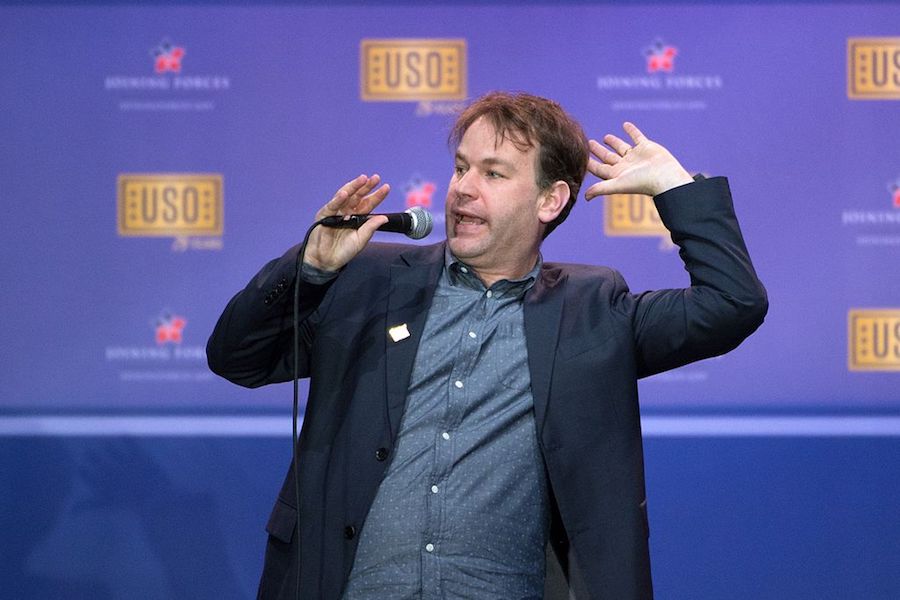
 Mike Birbiglia shows how comedy can transcend the disconnect between performer, audience
Mike Birbiglia shows how comedy can transcend the disconnect between performer, audience
In a 2013 Netflix comedy special, My Girlfriend’s Boyfriend, Mike Birbiglia tells a story. The special takes place in a big, open performance hall, with a long, wide stage elevated from the ground. The audience sits around the stage, which holds a single black stool.
Mike Birbiglia’s work is storytelling at its core. His work dwells on storytelling in a hyper-verbal form, in contrast to stand-up that concentrates much more on performance, physicality and facial expression.
In the first minute, Birbiglia sits on the stool. He proceeds to rest both on the stool and the stage itself throughout the show. The set-up provides the perfect medium for a long story. The audience is comfortable and he has as much, or as little, space as he wants to move about as he tells his story.
And it’s a long story. Birbiglia speaks for over an hour on one arc which functions as a “how I met your mother” epic, involving stories from his childhood to the present. The special tracks the misadventures of his romantic past, leading up to his marriage to long-time girlfriend Jenny despite his continued ambivalence toward matrimony.
The special is funny, heart-wrenching, honest and frank. Birbiglia appears to the audience an average Joe with flaws, quirks and some unpopular opinions. He criticizes his own lack of fashion sense and classic “good looks.” He seems approachable and authentic. The viewer feels as though they are listening to an acquaintance — a well-rehearsed and humorous acquaintance — answer the question: how did you meet your wife?
Comic Marc Maron, interviewing Birbiglia, noted that few comedians are able to work the long-form seen in My Girlfriend’s Boyfriend. What Birbiglia offers is an experience of storytelling integral to the general human experience: an iteration of our collective history.
Unlike storied comedians like Robin Williams, Jim Carrey and Will Ferrell, who are known for absurd physicality, and modern comics like Eric Andre, who shock and baffle the viewer, Birbiglia’s jokes rely on their as-written comedic value. His appearance, expression and body language are secondary to the writing itself.
Birbiglia’s style of comedy is most similar to that of Demetri Martin, a Greek-American comedian best known for his vernacular quips and comedy-in-song performances. In his Comedy Central special, Person, Martin sits on a stool playing guitar to a slew of unrelated but bizarrely consistent jokes, and draws sketches on a huge paper pad. In his Netflix special, Demetri Martin: Live (At the Time), he blurts: “Pets are animals that are not delicious,” “I don’t like fitted sheets; I feel like that’s a very passive aggressive design we’re dealing with” and “I find that athletic clothes are perfect for just sitting around in.” Martin takes an alternative approach to comedy like Birbiglia, but he’s not as intimate with his audience.
Because Birbiglia uses story to make his audience laugh, he connects with them on a more human level. Martin, who uses disconnected one-liners, is detached from his audience.
Although the two comics bear many similarities, it’s Birbiglia who makes the most of his form and craft. While Martin charms his audience, Birbiglia speaks from a place of authenticity in a medium that is deeply human. No comedian working today can make a better connection with their audience.
Written by: Stella Sappington — sasappington@ucdavis.edu
Disclaimer: The views and opinions expressed by individual columnists belong to the columnists alone and do not necessarily indicate the views and opinions held by The California Aggie.




